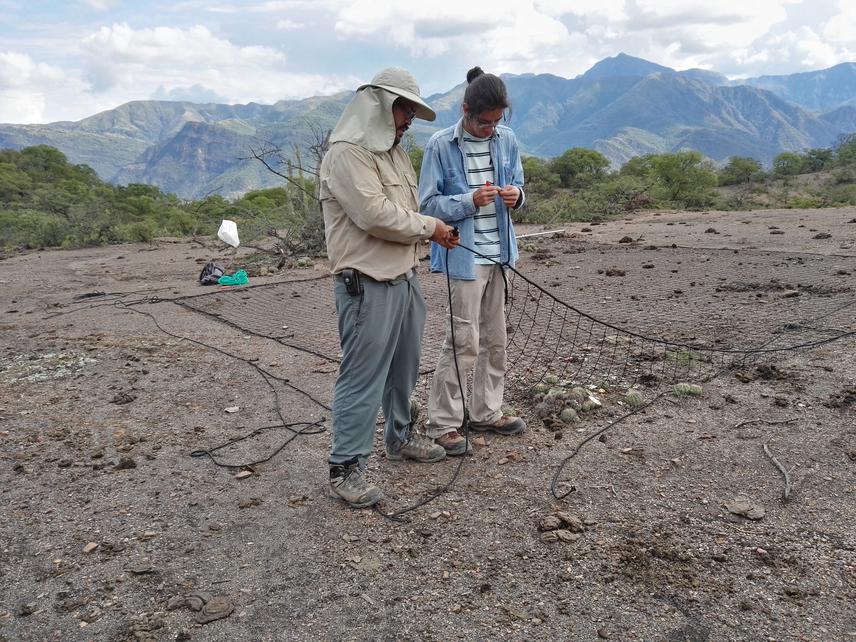Diego Ricardo Méndez Mojica
The King Vulture (Sarcoramphus papa) is a Neotropical species that naturally occurs at low densities and it is considered to be decreasing; yet its study has been largely neglected. In this regard, I aim to 1) determine the factors that influence King Vulture occupancy of roosts and nesting sites, 2) assess the use of protected areas by King vultures, 3) determine their movement patterns in relation to their age, sex and/or breeding status and 4) analyse the influence of livestock and dump management on King Vulture foraging movements. Complementary, I will explore sustainable alternatives for the coexistence between people and vultures.

Field work will be conducted along the eastern Andes of central Bolivia, which are characterized by a rugged topography where mountain ranges are interspersed with valleys and include habitats such as Interandean dry forests, Puna grasslands and Boliviano-Tucumano forests. This region is one in a handful of locations in South America where the King Vulture and the Andean Condor (Vultur gryphus) coexist, thus showing great potential to elucidate ecological relationships between these threatened top scavengers.
- Capture and marking - Based on plumage look, two adult and two immature King vultures will be capture and marked. Vultures will be captured at purposefully conditioned feeding sites and trap design, individual capturing and processing will be performed following the standard methods described for vultures and large raptors. Each individual will be fitted with a GPS transmitter, using a backpack harness attachment.
- Roosts, foraging grounds and nest surveys - The study area will be surveyed in search for vulture roosts, foraging grounds and nest sites. The search will be conducted based on the recorded movements of birds beforehand equipped with GPS transmitters, complemented with the available information of the area. Roosts and nesting sites – confirmed and potential – will be mapped, photographed and monitored when needed (e.g. active nests), and a set of environmental and ecological variables will be measured at each location and at random locations.
A georeferenced database of the important areas for King Vulture conservation in central Bolivia will be produced. Within a broad conservation context of social species with large area requirements – such as vultures – feeding grounds, roosts and nesting sites can be categorized as important areas for their conservation as they are critical to allow surveying their populations and provide a proxy of their conservation status. By locating these areas and identifying and assessing the factors that influence vulture use of them, the utility of this categorization will be highly increased. These data will be instrumental to rank the most important threats for the King Vulture in this part of Bolivia. Moreover, the database will be the starting point to develop vulture research and conservation actions integrating the fields of biology, natural resource management, education and development; for instance, the recorded movements will also be useful to list locations where vulture-watching as ecotourism initiatives can be developed.